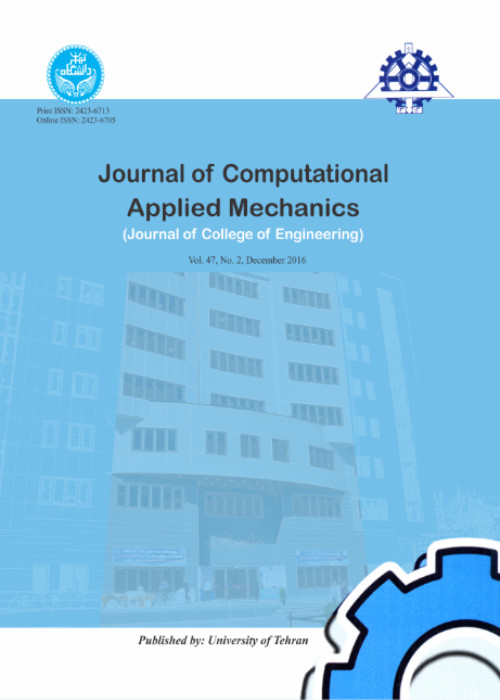A comparative study of crack detection in nanobeams using molecular dynamics simulation, analytical formulations, and finite element method
Author(s):
Article Type:
Research/Original Article (دارای رتبه معتبر)
Abstract:
The study of material behavior in the presence of defects is one of the studies that can help us recognize and predict material behavior. Studying the behavior of materials in nanoscale illuminates a broad view of the behavior of materials. A variety of studies are available for such a study: numerical, experimental, and quasi-experimental methods. Molecular dynamics is one of the methods that can be used to study the behavior of materials. The vibrational behavior of structures has been the focus of many researchers to analyze and investigate mortar materials' properties. The study of vibrational behavior at the nanoscale can give us a broad view of materials' properties. Therefore, in this study, we study nanowires' vibrational behavior in the presence of edge cracks using molecular dynamics. The influence of crack position and depth on the natural frequencies and shape of iron nanobeam modes with BCC crystal structure have been investigated. Clamped-Clamped boundary conditions with different cracks position and depth have been applied by simulating molecular dynamics. Also, the data obtained from molecular dynamics simulations have been compared with the finite element method and different crack models in one dimensional beams . In order to extract the shape of natural modes and frequencies by molecular dynamics method, FFT applied on the displacement history of nanobeam atoms after excitation of an amplitude in the center of nanobeam in x and y directions have been used. The crack models studied in this study were linear and rotational crack models on beams with Timoshenko theory. Molecular dynamics simulation data compared to other methods have shown a decrease in the value of natural frequencies in the presence of cracks. Also, finite element data and molecular dynamics are well matched. However, the molecular dynamics method has shown a more significant reduction in natural frequency values than finite element methods and various crack models with Timoshenko theory. We have also found that in molecular dynamics bribery, the initial excitation type of nanobeams is very useful in extracting nanobeam modes' shape.
Keywords:
Language:
English
Published:
Journal of Computational Applied Mechanics, Volume:52 Issue: 3, Sep 2021
Pages:
408 to 422
magiran.com/p2332264
دانلود و مطالعه متن این مقاله با یکی از روشهای زیر امکان پذیر است:
اشتراک شخصی
با عضویت و پرداخت آنلاین حق اشتراک یکساله به مبلغ 1,390,000ريال میتوانید 70 عنوان مطلب دانلود کنید!
اشتراک سازمانی
به کتابخانه دانشگاه یا محل کار خود پیشنهاد کنید تا اشتراک سازمانی این پایگاه را برای دسترسی نامحدود همه کاربران به متن مطالب تهیه نمایند!
توجه!
- حق عضویت دریافتی صرف حمایت از نشریات عضو و نگهداری، تکمیل و توسعه مگیران میشود.
- پرداخت حق اشتراک و دانلود مقالات اجازه بازنشر آن در سایر رسانههای چاپی و دیجیتال را به کاربر نمیدهد.
In order to view content subscription is required
Personal subscription
Subscribe magiran.com for 70 € euros via PayPal and download 70 articles during a year.
Organization subscription
Please contact us to subscribe your university or library for unlimited access!


